Trading Diary
July 19, 2002
The Nasdaq Composite lost 2.8% to close at
1319, below the 1357 October 1998 support level.
The primary and secondary cycles are in a down-trend.
The S&P 500 dropped 34 points to close at
847. The next support level is 804, from April 1997.
Primary and secondary cycles trend downwards.
Sun Microsystems stock dropped 27% after the company lowered 2003 revenue and earnings forecasts. (more)
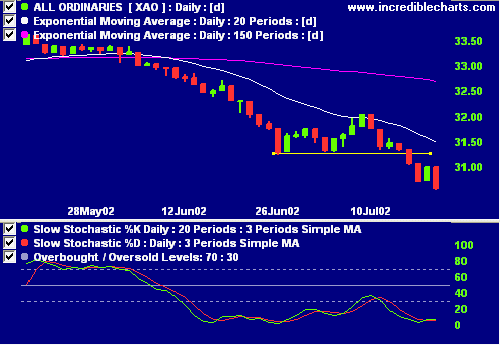
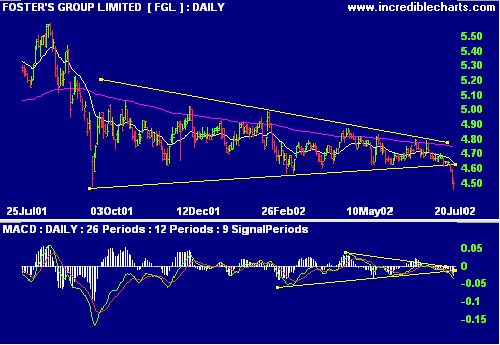
LNN has formed a similar triangle but has not yet made a breakout. Relative Strength (price ratio: xao) is strong, MACD is neutral, while exponentially-smoothed money flow signals accumulation during the recent flag pattern.
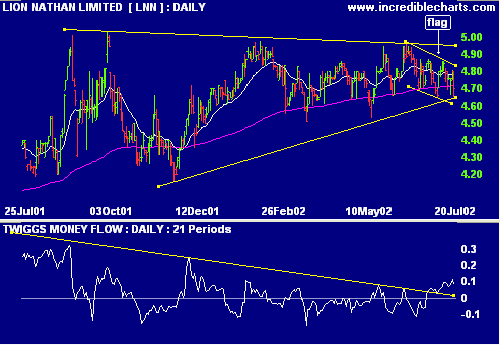
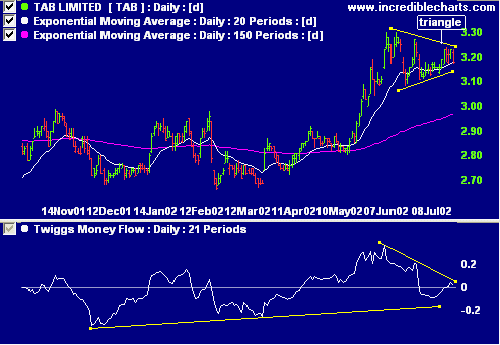
Stage changes are highlighted in bold.
- Energy [XEJ] - stage 1
- Materials [XMJ] - stage 4 (RS is rising)
- Industrials [XNJ] - stage 4
- Consumer Discretionary [XDJ] - stage 4
- Consumer Staples [XSJ] - stage 4
- Health Care [XHJ] - stage 4
- Property Trusts [XPJ] - stage 3
- Financial excl. Property Trusts [XXJ] - stage 4
- Information Technology [XIJ] - stage 4
- Telecom Services [XTJ] - stage 1 (RS is rising)
- Utilities [XUJ] - stage 1 (RS is rising)
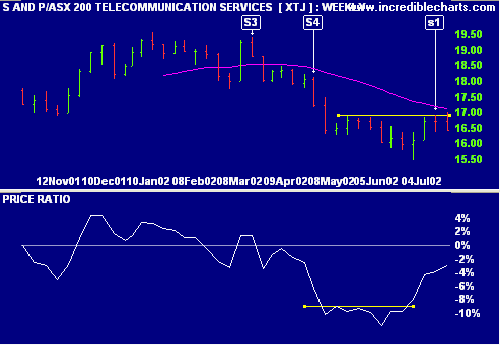
The ASX has ceased to provide the old ASX indices.
A stock screen of equities using % Price Move (3 months: +10%) is dominated by:
- Base Metals
- Computer & Office
- Diversified Media
- Gold Explorers
- Gold Producers
- Mining Explorers
- Miscellaneous Industrials
- Miscellaneous Services
- Oil & Gas Explorers
- Oil & Gas Producers
There are a few really outstanding companies, whose stock normally sells at a substantial premium, except in the final throes of a bear market.
Back Issues

Author: Colin Twiggs is a former investment banker with almost 40 years of experience in financial markets. He co-founded Incredible Charts and writes the popular Trading Diary and Patient Investor newsletters.
Using a top-down approach, Colin identifies key macro trends in the global economy before evaluating selected opportunities using a combination of fundamental and technical analysis.
Focusing on interest rates and financial market liquidity as primary drivers of the economic cycle, he warned of the 2008/2009 and 2020 bear markets well ahead of actual events.
He founded PVT Capital (AFSL No. 546090) in May 2023, which offers investment strategy and advice to wholesale clients.
